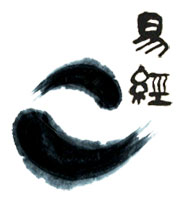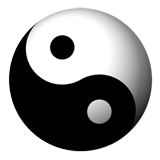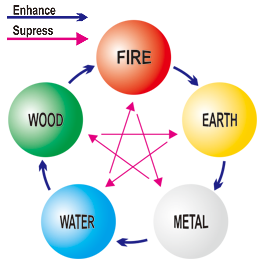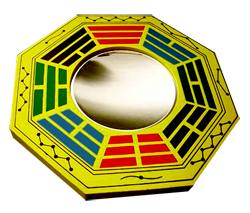|
Throughout the history of China, the Chinese prefer baby boy. The reason is simple - males are stronger than females on average, at least physically!
China is an agricultural country traditionally. In ancient Chinese society, more boys meant they could help their families to do more heavy duties in farm. As a result, they could make more money. Girls, on the other hand, should stay at home until they reached sixteen or seventeen, during which time they were little more than an expense.
They were then taken to their husbands' home and their own families had no further control their life or conduct. This through many years and centuries has generated in the popular mind a feeling that it is "bad business raising girls for other people,"
 The ancient Chinese Gender Chart is used to predict and select the sex of baby. According to legend, the chart was invented at the beginning of the Qing dynasty (1644~1912), with the help of I Ching (易經) which includes the Yin and Yang, the Five Elements and the Eight Trigrams. The fact that the chart was found at the tomb of an emperor in last century did not really surprise historians, as gender selection for sons were extremely important for the ancient Chinese emperors.
The original copy is now in the Institute of Science in Beijing, and because of its high accuracy, it is getting more attention from both western and eastern world.
I Ching
During the past 6000 years of history recorded surrounding Chinese emperors, it has been revealed that both metaphysical methods as well as cosmology were used in order to make decisions about the ruling of the country. As far back as 4000 B.C, I Ching was used when making highly important decisions, more evidence having been since found by archaeologists who have studied the Chinese empire in recent years. This tradition was long lasting, but it was eventually abandoned when the Qing Dynasty fell, the Chinese realizing at this point that it was time they caught up with the Western World and their scientific methods. At this point the use of I Ching was temporarily abandoned. However, in recent times, such methods have seen a come back, being used alongside the scientific and modern methods that are used in western society. What this means in short is that the ancient art of I ching is now being used to complement the Western sciences and shortcomings.
As regards to Chinese metaphysics, the “Book of Changes”, or I Ching as it is also known is the most respected as well as the oldest literature on the subject. The symbols in the book have been studied by scientists and scholars in the west, and the book has been translated into a text that is readable in the modern day world. The “Book of Changes” represents Oriental wisdom, and the symbols that are found within the book have been incorporated into the flag of South Korea. The five elements, the eight trigrams, and the now commonly used theory of Yin and Yang are all believed to belong to this ancient work from China.
Yin and Yang
 The Chinese had a set of formulas that they used to analyze nature. Yin and Yang were discovered by the Chinese, the dualism possessed being the underlying principle for everything that exists in nature. Yin represents the positive and male side of everything, Yan the female and negative side; nothing is truly complete without these two sides, the male being bright and positive and the female being dark and negative. These two sides to everything are integrated and complement each other to form a whole object, harmony only ever being achieved when both Yin and Yan are present. This belief can be seen in the representations of “Tai Chi,” where white and black circles merge together to make the whole. This philosophy is crucial in Chinese culture, and is a fundamental element of their every day life and their way of thinking.
The Five Elements
 According to the philosophy of the ancient Chinese, there are five forces and energies present in everything that is present in the universe. These five energies or forces are all commonly found on the living planet; wood, metal, water, earth, and fire. Everything that is found on the living planet is by metaphysical belied subject to these five forces, whether abstract or material, and even man and his fortune or misfortune are subject to the influences of these five elements. The five forces found in every object on the planet are not static; they are constantly reacting with each other, and the five elements within are the cause for all changes that occur in the universe, as well as all events and matters that take place. The five basic elements are constantly reacting with each other; however this reaction does not cause chaos in the universe due to some fundamental rules that are present. The rules that ensure that the reactions of the five elements are not chaotic are the cycle of destruction and the cycle of birth, the two cycles being explained with illustrations below.
The Eight Trigrams
 When studying I Ching, the “Eight Trigrams are another basic component. Each one of these trigrams is formed by three continuous or broken lines. When a broken line is shown, this represents the Yin of the matter; a continuous line represents the Yan of the matter. When you put together all the different combinations of three lines, both continuous and broken, you will find that there are indeed eight different combinations that make up the eight trigrams. Each of these eight trigrams has a meaning that is assigned to it, and these include a natural phenomenon, a season, a class of person, a bodily organ, a family member, or a basic element or animal. These eight different trigrams are a representation of everything that you can find in the living universe. If you go on to combine any two of these 8 trigrams, you will find that the number of hexagrams will total 64, each of the hexagrams being a representation of six lines. By studying these hexagrams, you will find a more detailed representation of the matter such as the relationship between two human beings.
|
|
